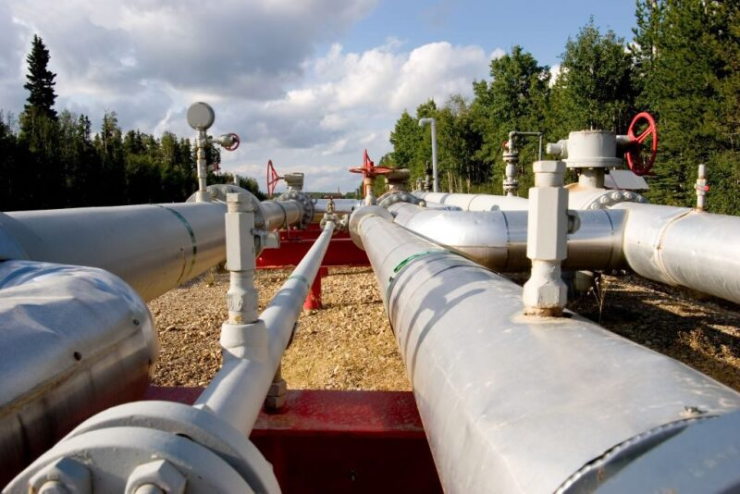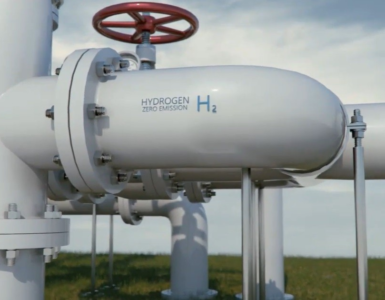Experts say blending hydrogen into gas pipelines won’t work.
[Canary Media] Utilities want to extend their infrastructure’s useful life. But the evidence suggests the risks and costs far outweigh the negligible emissions-reduction impact.Green hydrogen could be a vital tool to limit greenhouse gas emissions from hard-to-decarbonize sectors like steelmaking, shipping and chemicals manufacturing.
But trying to use it as a substitute for natural gas to heat buildings, or even to fuel power plants, could be a pipe dream that wastes precious time and money that would be better directed to more realistic and cost-effective options to reduce carbon.
🔥 What about we co-host a webinar? Let's educate, captivate, and convert the hydrogen economy!
Hydrogen Central is the global go-to online magazine for the hydrogen economy, we can help you host impactful webinars that become a global reference on your topic and are an evergreen source of leads. Click here to request more details
That’s the key takeaway from a new report by San Francisco–based think tank Energy Innovation that lays out the latest critique of U.S. utility plans to use hydrogen as a substitute for fossil gas in their pipelines.
In the past two years, such utility efforts have been expanding, and they now include at least 26 separate pilot projects, many of them aimed at injecting hydrogen into existing gas pipelines.
These range from individual utilities testing new hydrogen production and storage technologies to the Department of Energy’s HyBlend project, which involves multiple utilities and federal research labs.
Many of the pilot projects aim to repurpose existing fossil gas pipeline networks to use hydrogen that is manufactured using methods that don’t increase greenhouse gas emissions.
But Energy Innovation’s report pulls together a growing body of research that indicates that these plans are severely limited by engineering and environmental challenges, casting serious doubt on their future viability.
State utility regulators are “kind of scratching their heads a bit on understanding the implications and risks of going down certain hydrogen pathways,” Sara Baldwin, Energy Innovation’s director of electrification policy and report co-author, said in a Monday interview.
“Regulators need to be asking tough questions right now, and not assuming that these investments are prudent.”
“Green” hydrogen, which is made by electrolyzing water with carbon-free electricity, can have a role to play in powering the “hardest-to-decarbonize” sectors, Baldwin said.
It can also replace the more than 70 million metric tons of hydrogen now produced globally each year for use in oil refining, fertilizer manufacturing and other industrial activities, almost all of which is made from methane via a process that emits significant amounts of greenhouse gases.
But uses that involve gas utilities charging their customers for “entirely new infrastructure and massive capital investments” in existing pipeline networks need to be subjected to much more stringent scrutiny, she said.
Utility regulators must weigh the risk of extending the use of fossil fuel infrastructure that may be incompatible with broader decarbonization goals. They should be asking, “What is the future of gas writ large?” she said.
Blending hydrogen with fossil gas: A non-starter for buildings
Energy Innovation’s report critically analyzes a number of different potential uses of green hydrogen. But the clearest findings are those that undercut the viability of blending hydrogen with fossil gas in pipelines that supply buildings with gas for heating, cooking and other indoor uses.
This prospect is being explored by utilities including CenterPoint Energy, Dominion Energy, National Grid, Puget Sound Energy, Southern Company Gas and Southwest Gas Holdings.
Utility holding company Sempra Energy is a strong proponent of this concept, with a dozen hydrogen-related projects underway, many of them being conducted by its Southern California Gas subsidiary.
These include projects testing hydrogen fuel cells for stationary and vehicle power as well as a hydrogen pipeline injection pilot with its San Diego Gas & Electric subsidiary.
Neil Navin, vice president of clean energy innovation at Southern California Gas, cited the potential for hydrogen blending to “decarbonize the natural gas system today,” using an infrastructure that’s already providing energy across a state that’s set aggressive decarbonization targets.
“Many appliances today may run just fine on the existing natural gas system if there’s a blend,” he said — a premise the utility has been testing in experimental settings.
While current data indicates that existing pipelines and appliances can only handle a mix containing up to about 20 percent hydrogen before requiring major upgrades, Southern California Gas wants to find out if that proportion could be increased.
“We and others, including the DOE, are very interested in learning what those limits are.”
But there’s significant doubt about whether hydrogen can be safely blended into existing pipelines at proportions high enough to make a dent in overall greenhouse gas emissions, according to Energy Innovation’s Baldwin.
Hydrogen is a very different molecule from methane, which makes up the majority of fossil gas. It’s composed of the smallest molecule in existence, which makes it more difficult to contain in pipelines, increasing the risk of leaks.
It’s also known to weaken the strength of steel used for large-scale gas pipelines, and it can be ignited far more easily than methane can.
All of this means that any widespread use of hydrogen would have to be accompanied by lengthy and costly safety studies, and it could require major retrofits and replacements of existing pipelines or entirely new appliances.
At the same time, hydrogen carries only about one-third as much energy per unit of volume as does methane, which means that a 20 percent blend of hydrogen will only reduce the emissions impact of its use by 6 to 7 percent.
Thanks for staying up to date with Hydrogen Central. Most utilities are blending at much lower levels than that right now, essentially eliminating the emissions impact altogether.
These drawbacks make hydrogen a far less effective decarbonization option than replacing gas-fired heaters, stoves and other appliances with all-electric models, said Energy Innovation policy analyst Hadley Tallackson.
“Just sending that renewable electricity through the grid” is far more efficient than using it to make hydrogen, she said.
That view is echoed by independent studies, including the International Energy Agency’s 2021 Net Zero by 2050 report, which found that hydrogen-based heating would likely make only a minuscule contribution to decarbonizing building heating through 2050.
Energy efficiency and electrification via heat pumps are projected to be far more valuable tools in this effort, IEA’s analysis states.
THIS STORY CONTINUES, READ THE REST OF THE ARTICLE IN THE SOURCE LINK BELOW
Experts say blending hydrogen into gas pipelines won’t work, source









2 comments